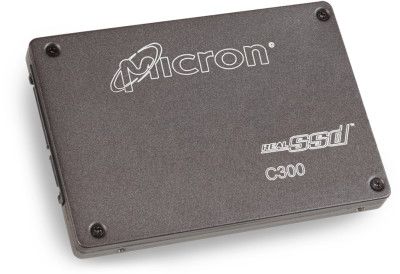From our front-page news:
S-ATA 3.0 (6Gbit/s) has been available to consumers for the past month or two, but the drives themselves have been scarce. On the mechanical hard drive side, Seagate is the lone contender right now with its Barracuda XT, but we can expect to see products trickle out from the others over the course of the next few months. But, the truth is, S-ATA 3.0 does little for mechanical hard drives, due to technical limitations.
But with SSDs, the sky's the limit. On S-ATA 3Gbit/s, the theoretical limit was 300MB/s, and many SSDs have shown themselves to be capable of delivering close to that same figure, but nothing higher. So with S-ATA 3.0's doubled limits, SSDs have a lot of room to grow, and the proof of this is beginning to be seen now. Yesterday, Micron announced its RealSSD C300, which is as far as I'm aware, the first consumer SSD to become available for S-ATA 3.0.
Of course, S-ATA 6 will mean little if the speeds are the same as what we've seen for a while, but that's not the case. While the drive writes at 215MB/s (this was possible with S-ATA 3Gbit/s, but it's still extremely impressive), the read speed is 355MB/s, a figure that extends just beyond the previous limit of 300MB/s. For those familiar with Futuremark's PCMark Vantage suite, the C300 scores 45,000 in its HDD test.
The fact that the drive uses the S-ATA 3.0 bus is interesting enough, but it also uses Micron's latest 34nm MLC flash memory, which the company touts as being the first to adhere to the ONFi 2.1 standard. Unfortunately, the press release doesn't give us the details we really want, such as pricing and availability, but I suspect we'll learn more soon, or at the latest, during CES in early January.

Native support of SATA 6Gb/s means that the data path between the host computer and the SSD is twice as fast as the previous SATA 3Gb/s interface. While some drive architectures require a trade-off between throughput-sensitive and IOPS (Input/Output Per Second)-sensitive data streams, Micron’s core design and higher speed interface provides advantages for both. The C300 SSD leverages the SATA 6Gb/s interface to achieve a read throughput speed of up to 355MB/s and a write throughput speed of up to 215MB/s. Using the common PC Mark Vantage scoring system, the C300 SSD turns in a score of 45,000 from the HDD Suite.
Source: Micron Press Release
But with SSDs, the sky's the limit. On S-ATA 3Gbit/s, the theoretical limit was 300MB/s, and many SSDs have shown themselves to be capable of delivering close to that same figure, but nothing higher. So with S-ATA 3.0's doubled limits, SSDs have a lot of room to grow, and the proof of this is beginning to be seen now. Yesterday, Micron announced its RealSSD C300, which is as far as I'm aware, the first consumer SSD to become available for S-ATA 3.0.
Of course, S-ATA 6 will mean little if the speeds are the same as what we've seen for a while, but that's not the case. While the drive writes at 215MB/s (this was possible with S-ATA 3Gbit/s, but it's still extremely impressive), the read speed is 355MB/s, a figure that extends just beyond the previous limit of 300MB/s. For those familiar with Futuremark's PCMark Vantage suite, the C300 scores 45,000 in its HDD test.
The fact that the drive uses the S-ATA 3.0 bus is interesting enough, but it also uses Micron's latest 34nm MLC flash memory, which the company touts as being the first to adhere to the ONFi 2.1 standard. Unfortunately, the press release doesn't give us the details we really want, such as pricing and availability, but I suspect we'll learn more soon, or at the latest, during CES in early January.

Native support of SATA 6Gb/s means that the data path between the host computer and the SSD is twice as fast as the previous SATA 3Gb/s interface. While some drive architectures require a trade-off between throughput-sensitive and IOPS (Input/Output Per Second)-sensitive data streams, Micron’s core design and higher speed interface provides advantages for both. The C300 SSD leverages the SATA 6Gb/s interface to achieve a read throughput speed of up to 355MB/s and a write throughput speed of up to 215MB/s. Using the common PC Mark Vantage scoring system, the C300 SSD turns in a score of 45,000 from the HDD Suite.
Source: Micron Press Release
